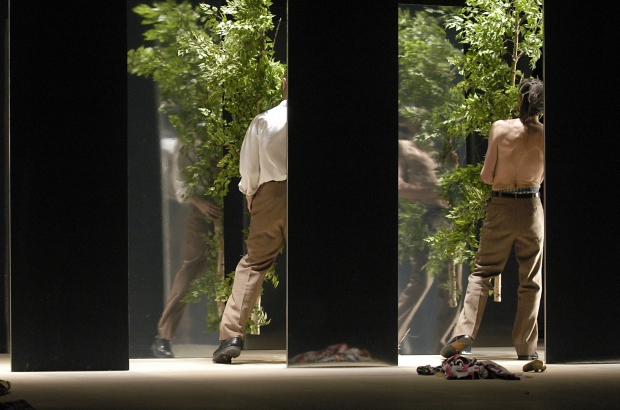- Daily & Weekly newsletters
- Buy & download The Bulletin
- Comment on our articles
Burning Ice festival stares into the abyss
In recent years, Kaaitheater’s Burning Ice festival has used art, performance and debate to explore how we can make the transition to a more sustainable society. But this year, for its ninth edition, it decided to sound an alarm.
“We have this transition movement, there are a lot of good ideas, but we need to go one or two gears higher if we really want to make it,” explains Guy Gypens, Kaaitheater’s artistic director.
His idea of looking at society’s reluctance to change was conceived in the run-up to the United Nations Conference on Climate Change in Paris last year. “The feeling then was that we are facing these tipping points on several levels and in several domains, and still we haven’t seen much will to change our behaviour and set different goals.”
This idea of sounding the alarm was nearly derailed when the Paris conference agreed ambitious goals for controlling climate change. “But after Paris, an enormous silence fell over all the participating countries,” Gypens says. “And since then we haven’t heard anything about what we are going to do to implement what we agreed on.”
So we still need Burning Ice to shake us up. “The idea is that we shouldn’t forget the urgency,” he says. “Just because we’re all doing our best and making agreements, and thinking about it and doing little bits here and there, that doesn’t mean we’re actually busy solving the problem.”
A delicate balance
One of the highlights of the festival is a revival of Umwelt, by French choreographer Maguy Marin. Nine performers appear and disappear through a wall of mirrors, which shakes as if in a high wind. The scenes that unfold show the turbulent relationship between people and their environment, and the sense of life as perpetual change.
The piece (pictured) was devised in 2004 but has long been out of circulation. “Marin was one of the first choreographers to address this issue of the human being and its environment within the dance world,” Gypens says. “And it is a fantastic show, I think one of the key dance pieces of the last 15 to 20 years.”
The delicate balance of the Arctic ecosystem inspired Flemish artist Lawrence Malstaf to make his installation Tipping Point. This consists of a large, water-filled disc poised on top of a steel support, its balance gracefully disturbed by the unpredictable movements of a large air bubble.
Meanwhile, in Mars II by Karl Van Welden a gentle rain of ash floats down on to a pianist, becoming ever more visible. Both his appearance and sound are gradually transformed, creating a poetic commentary on how catastrophes affect our thinking.
Another tipping point in the festival concerns technology and the way it increasingly escapes our control. Kris Verdonck’s In Void is a performance without people, in which machines, objects and other presences take over the whole of Kaaistudio. And in Annie Dorsen’s Hello Hi There two laptops perform an improvised dialogue based on a television debate between the philosophers Michel Foucault and Noam Chomsky.
Finally, the eventual merging of human and machine life is explored in Everything Happens So Much, a new performance from ex-Rosas dancer Sandy Williams. What happens to our raw, flawed and unfinished human natures, he asks, when they meet the pristine potential of a totally digitised destiny?
The festival also includes two debates, both in English. Economists Paul De Grauwe and Federico Demaria will discuss options for an economy without growth, while the philosophers Lieven De Cauter and Isabelle Stengers will consider whether various imminent tipping points mean we are entering a period of “post-history”.
Burning Ice #9, 11-20 February, Kaaitheater & Kaaistudio’s, Brussels. Photo: Christian Ganet









